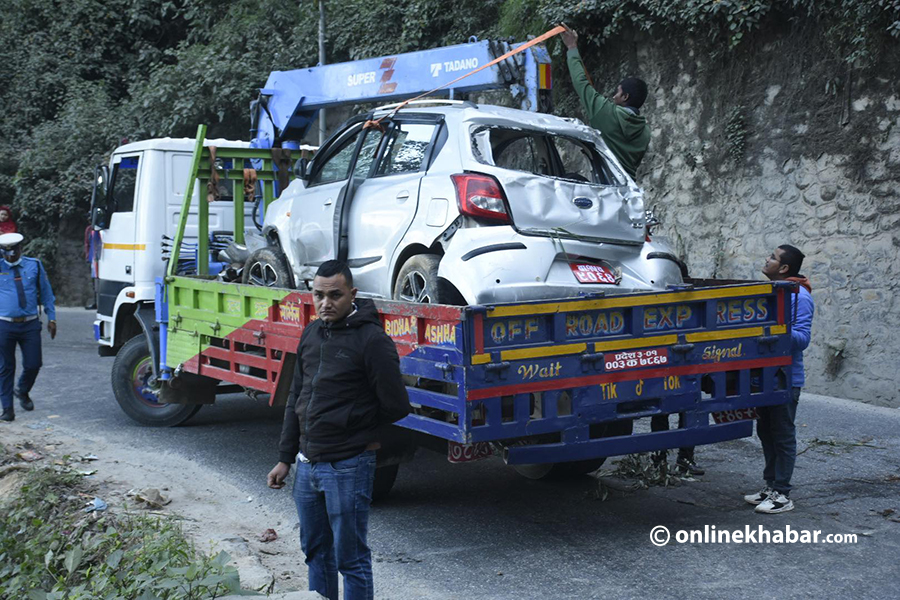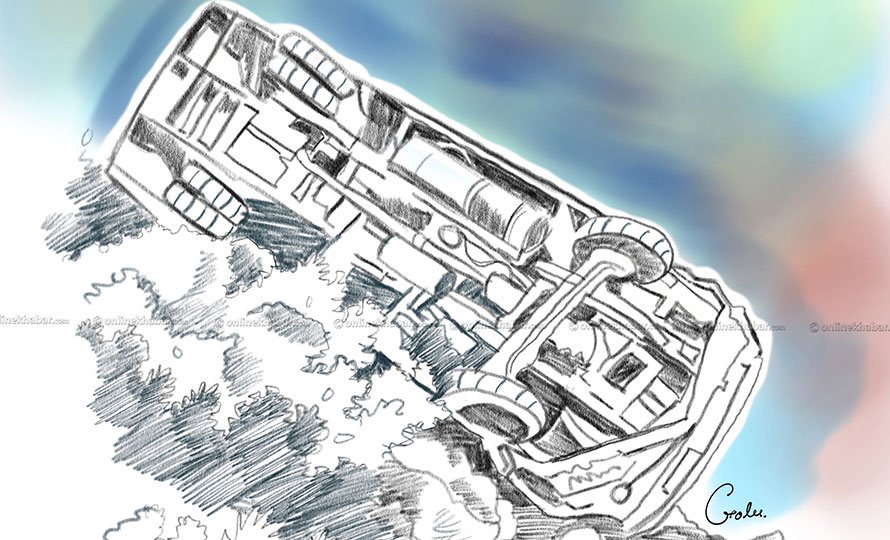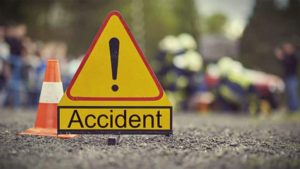
In the last week of July, Biswo Raj Shrestha of Dolakha had a motorbike accident in Lisankhapur Rural Municipality-7, Sindhupalchowk. He lay there waiting for help. But it came too late as he breathed his last.
On January 13, 12 people died in a bus accident in Bhalubang. The accident took place at 11.30 pm affecting the effectiveness of rescue efforts.
“If this accident took place in any other country, many would have lived. But here, our poor rescue system did not come on time and so many people died,” said a social media user as he showed how chaotic the situation was.
These cases highlight a concerning trend in how delayed rescue efforts following road accidents in Nepal are resulting in the loss of countless lives. According to reports, in the first quarter of the current fiscal year, there were 9,814 road accidents, resulting in 463 deaths and 7,839 injuries.
Need for a rescue mechanism

The absence of prompt rescue services, lack of rescue skills, and delays in information sharing contribute to casualties in road accidents. In many countries, dedicated systems and teams exist to promptly respond and rescue individuals involved in accidents.
These dedicated teams and systems play a crucial role in both controlling road accidents and providing immediate rescue. They use systematic and scientific approaches to rescue individuals, along with educating the general public on essential safety methods to be applied during rescue operations.
This is because doctors believe there is a high probability of saving injured people if they are given first aid and taken to the hospital on time.
Ramesh Maharjan, head of the emergency department at Tribhuvan University Teaching Hospital, says there is a common misconception about rescue operations in Nepal. He says while many believe rescuing means taking the injured directly to the hospital, Maharjan argues that it is crucial to provide initial treatment at the accident site before transporting them to the hospital.
“As we are unable to make the emergency number ‘102’ active, many of the passengers have lost their lives,” says Maharjan. “This is the number to call nearby ambulances, the general public and the Nepal Police are also not using it.”
“The people are brought to a hospital in the same condition as they were found in an accident,” he says. “This is not the right way of emergency rescue.”
Maharjan says that the timely arrival of ambulances increases the chance of saving injured individuals.
“We need to reevaluate how we rescue people and the mechanism on how we conduct rescue operations,” he says.
Poor coordination

In Nepal, the first people to reach the accident spot are locals followed by the police. Depending on the specific requirements of a rescue operation, the Armed Police Force and Nepali Army are deployed. However, the police face challenges as they lack necessary technologies, equipment, and sufficient human resources.
Spokesperson of Nepal Police, Bhim Prasad Dhakal says that if an accident occurs within the city area, the police are expected to arrive at the scene within five to seven minutes.
However, Dhakal accepts that due to the difficult geographical condition of Nepal, and the lack of skilled human resources and equipment, the effectiveness of emergency rescue operations has fallen short of expectations on Nepal’s highways.
Ram Hari Pokharel, spokesperson of the Department of Road, calls for coordination among all the concerned bodies for effective emergency rescue and controlling road accidents.
“We need to set up a trauma centre on our main highways where these road accidents occur the most,” says Pokharel. “To improve the situation of road accidents he says there is also a need to buy necessary equipment and develop skilled human resources.”
The implementation of the Road Safety Act is anticipated to bring about improvements in emergency road rescue efforts. Data reveals that in low-income countries such as Nepal, the mortality rate is twice as high when individuals are transported from the accident site to the hospital compared to developed countries.
According to the report of the Transportation Improvement Suggestion Task Force 2023, formed by the government, it has been found that 20 per cent of the injured died at the scene, 20 per cent were treated poorly and 60 per cent died due to delay in transferring the injured in the first hour after the accident.
For this reason, the report suggests that before taking the patient to the hospital, there should be an arrangement to provide effective service at the scene of the incident with an ambulance, skilled staff and human resources who are skilled in emergency rescue.
“Everyone needs to stand up and take ownership,” says Pokharel.






















